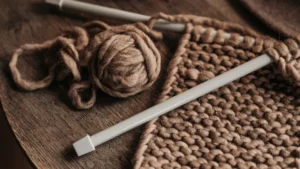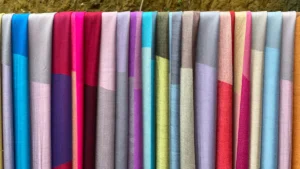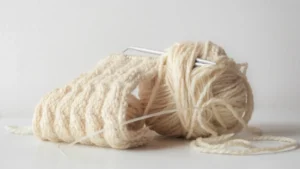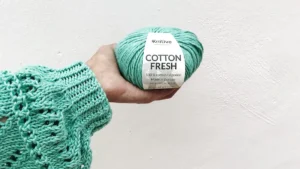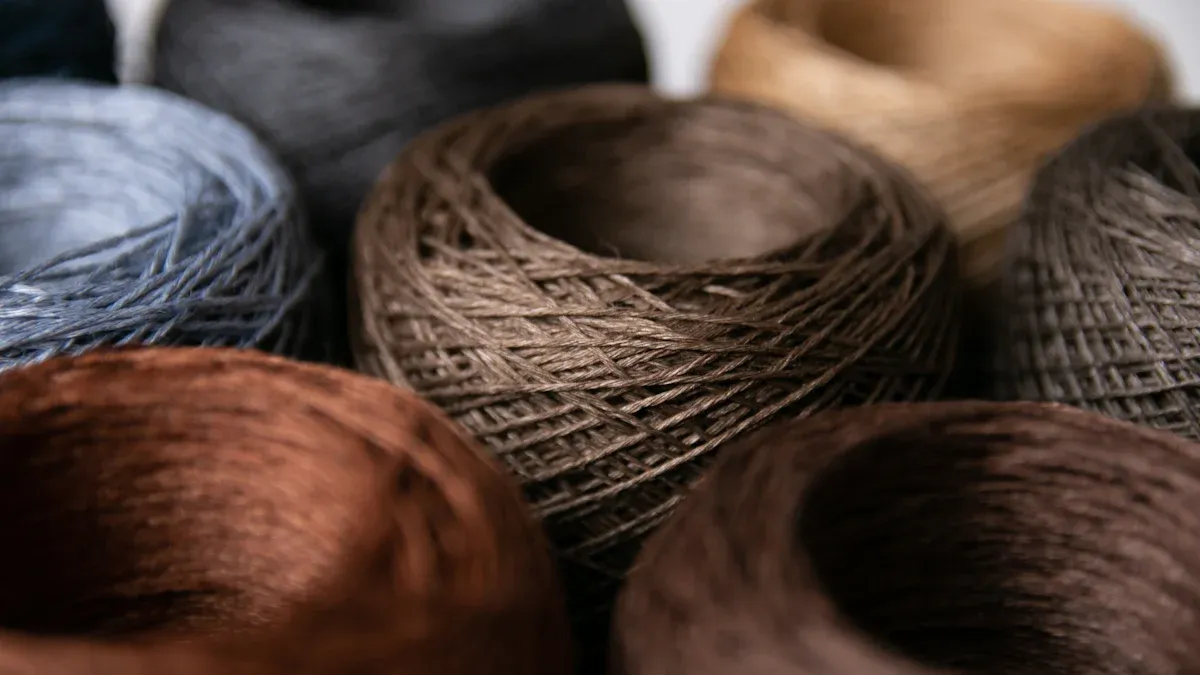
You need to choose the right ply for your private label knitwear based on who will wear it, where they live, and how they will use it. Ply means the number of yarn strands twisted together in cashmere. This number changes how warm, strong, heavy, or soft your knitwear feels. Think about both ply and fiber quality to make sure your collection stands out and meets your customers’ needs.
Key Takeaways
Ply is how many yarn strands are twisted together. More plies make cashmere thicker and warmer. It also makes it stronger but heavier.
Pick 2-ply if you want soft and light knitwear. It works well for mild weather and for layering clothes.
Choose 3-ply for warmer and stronger clothes. These are good for cold places and styles that need more shape.
Use 4-ply for the thickest and warmest pieces. These are best for very cold winters and fancy collections.
Always think about fiber quality with ply. This helps make sure your cashmere is soft, strong, and lasts a long time.
Ply Basics
What Is Ply?
Ply means the number of strands twisted together to make a single yarn. When you see “2-ply” or “4-ply” on a cashmere label, it tells you how many threads form the yarn. For example, a 2-ply yarn uses two strands twisted together. If you twist two 2-ply yarns side by side, you get a 4-ply yarn. Each extra strand adds more weight and thickness to the yarn.
You can find cashmere yarns in different ply counts:
1-ply uses a single strand.
2-ply twists two strands together.
3-ply and 4-ply use three or four strands, making the yarn thicker and stronger.
Tip: More plies do not always mean better quality. The number of plies changes the feel and strength, but fiber quality matters just as much.
How Ply Affects Cashmere
The number of plies changes how your cashmere knitwear feels and performs. More plies make the yarn thicker, warmer, and stronger. Fewer plies create lighter, softer, and more delicate fabrics. You should choose the ply based on how you want your garment to look and feel.
Here is a quick guide to how ply affects cashmere:
Ply Count | Description | Effect on Physical Properties |
|---|---|---|
1-ply | Single strand of cashmere yarn | Lightest and finest; less strong and less durable |
2-ply | Two strands twisted together | Thicker and stronger; more substantial fabric |
3-ply | Three strands twisted together | Even thicker and stronger; warm, cozy garments |
4-ply | Four strands twisted together | Very thick and dense; ideal for heavy winter clothing |
When you increase the ply, you get a denser yarn that stands up better to wear and tear. Higher ply counts add warmth and weight, which is great for winter pieces. However, more plies do not always mean higher quality. Always look at both the ply and the fiber quality when choosing cashmere for your collection.
Ply Differences
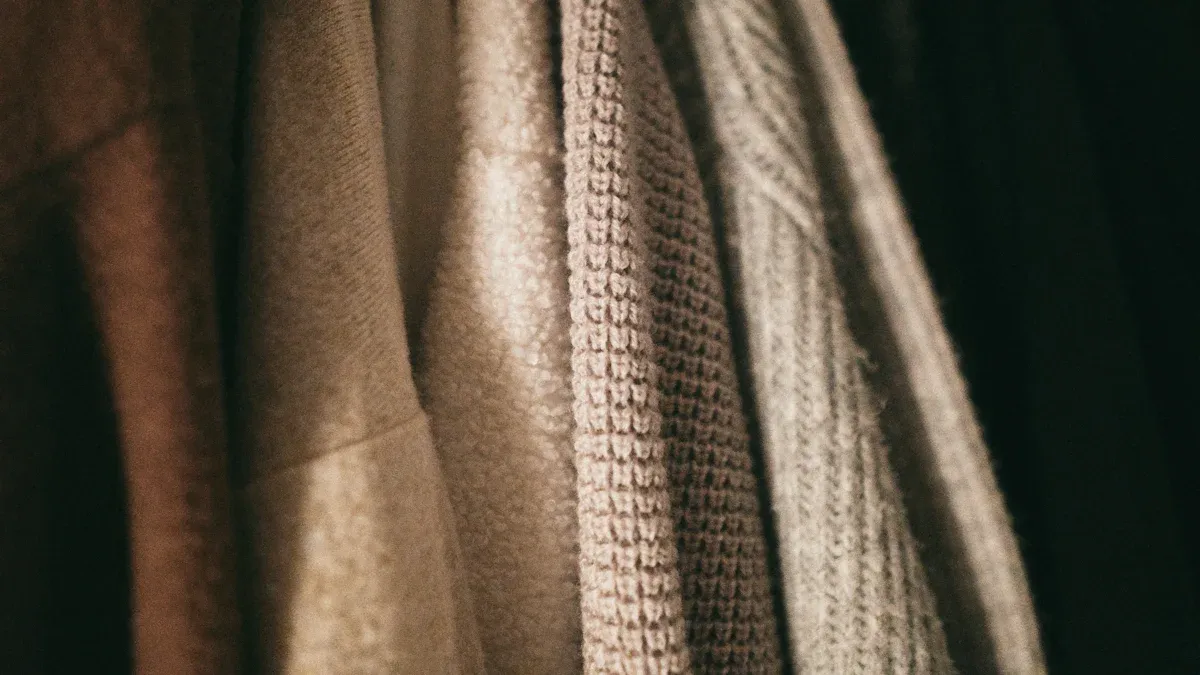
2-Ply Cashmere
2-ply cashmere uses two strands twisted together to make the yarn. This type gives you a good balance between softness and strength. You get a fabric that feels light but still holds up well over time. Many people choose 2-ply for its versatility. You can wear it in cool weather, and it works well for layering.
Characteristics: Soft, smooth, and not too heavy.
Warmth: Offers good warmth for most winter days, but not as thick as higher plies.
Durability: More durable than 1-ply, less likely to pill or stretch out.
Feel and Weight: Light and comfortable, easy to wear indoors or outdoors.
Note: 2-ply cashmere is a popular choice for sweaters and cardigans. You can find it in many stores because it fits many needs. If you want the right ply for a wide range of customers, 2-ply is a smart pick.
Typical uses for 2-ply cashmere:
Everyday sweaters and cardigans
Lightweight pullovers
Transitional pieces for fall and spring
3-Ply Cashmere
3-ply cashmere uses three strands twisted together. This makes the yarn thicker and warmer than 2-ply. You get more insulation, which helps in colder climates. The fabric feels heavier and more substantial, so it works well for structured garments.
Characteristics: Thicker and more robust than 2-ply.
Warmth: Provides extra insulation, making it ideal for cold winters.
Durability: Strong and long-lasting, holds its shape well.
Feel and Weight: Heavier and cozier, but still soft to the touch.
If you want to offer the right ply for customers who live in colder places or want a warmer sweater, 3-ply is a great option. It gives you a balance between warmth and comfort.
Best uses for 3-ply cashmere:
Chunky sweaters and pullovers
Warm cardigans for winter
Garments that need more structure and weight
4-Ply Cashmere
4-ply cashmere uses four strands twisted together. This creates the thickest and warmest fabric among the common ply counts. You get a garment that feels very dense and heavy. It is perfect for harsh winters or for people who want maximum warmth.
Characteristics: Very thick, dense, and strong.
Warmth: The warmest option, great for freezing temperatures.
Durability: Extremely robust, resists wear and tear.
Feel and Weight: Heaviest and bulkiest, but still keeps the soft feel of cashmere.
Tip: Choose 4-ply if you want the right ply for heavy winter wear or luxury pieces. It is not as versatile for mild climates, but it stands out for warmth and durability.
Ideal uses for 4-ply cashmere:
Heavy winter sweaters and coats
Thick scarves and wraps
Ultra-luxury knitwear collections
Ply Comparison Table
You can use this table to compare the main differences:
Ply Count | Warmth | Durability | Feel and Weight |
|---|---|---|---|
2-Ply | Good warmth, balanced for winter | Robust, less prone to damage | Soft, versatile, light yet durable |
3-Ply | Thicker, warmer, ideal for cold climates | More durable, keeps structure | Heavier, thicker, increased insulation |
4-Ply | Thickest, warmest, best for harsh winter | Extremely robust, very resistant | Maintains softness, but heavier and bulkier |
When you choose the right ply for your private label knitwear, think about your customers’ needs and the climate they live in. Lighter plies work well for layering and mild weather. Higher plies give more warmth and strength for cold winters. Each ply offers a unique feel and purpose, so match your choice to your collection’s goals.
Product Use Cases
Cardigans
You want your cardigans to feel comfortable and look stylish. 2-ply cashmere works well for most cardigans. It gives you a soft, light layer that you can wear indoors or outdoors. This ply keeps the cardigan flexible and easy to move in. If you design for colder climates, 3-ply cardigans offer more warmth and structure. They hold their shape and feel cozy on chilly days. For luxury winter collections, 4-ply cardigans provide extra thickness and a premium feel. These cardigans suit customers who want the warmest option.
Tip: Choose 2-ply for versatile, everyday cardigans. Pick 3- or 4-ply for heavier, statement pieces.
Pullovers
Pullovers need to balance comfort and warmth. 2-ply pullovers feel light and breathable. You can wear them alone or layer them under jackets. This makes them perfect for fall or spring. 3-ply pullovers give you more insulation. They work best for winter or for people who want a thicker sweater. 4-ply pullovers feel very warm and heavy. These suit harsh winters or customers who want a bold, chunky look.
Quick Guide:
2-ply: Best for mild weather and layering.
3-ply: Good for cold days and structured styles.
4-ply: Ideal for extreme cold and luxury collections.
Scarves and Wraps
Scarves and wraps need to drape well and keep you warm. Ply selection changes how these accessories feel and last. A 2-ply scarf feels soft and light, but still warmer and stronger than a single strand. You get a scarf that resists holes and keeps its shape. If you want more warmth and durability, 3- or 4-ply yarns make scarves and wraps heavier and cozier. These higher plies help the fabric drape beautifully and last longer, even with frequent use. Advanced spinning methods, like mule spinning, add to the luxurious texture and strength.
2-ply: Light, warm, and flexible for everyday use.
3-ply: Thicker, cozier, and holds shape well.
4-ply: Heaviest, warmest, and most durable—great for winter.
When you match ply to each product, you help your customers stay comfortable and stylish in every season.
Right Ply for Your Brand
Market Positioning
You want your brand to stand out in the cashmere market. The right ply helps you do this. Start by thinking about your target customers. Are you designing for people who want everyday comfort, or do you want to attract buyers looking for luxury and warmth?
If you run a boutique brand, you might focus on 2-ply cashmere. This ply gives you a soft, light fabric that works for many seasons. Customers who shop at boutiques often want versatile pieces they can wear at home, at work, or while traveling. Two-ply yarns also show off stitch patterns and colors well, which helps your designs look more refined.
Premium brands often choose 3-ply cashmere. This ply offers more warmth and structure. You can create sweaters and cardigans that feel cozy and last longer. Customers who buy premium products expect their clothes to keep their shape and look new after many wears. Three-ply yarns help you meet these needs.
Ultra-luxury brands usually pick 4-ply cashmere. This ply creates thick, heavy garments that feel rich and exclusive. Shoppers in this segment want the best materials and the warmest knits. Four-ply cashmere stands out for its weight, density, and long-lasting quality. You can use this ply to make statement pieces for winter or high-end collections.
When you match the right ply to your brand’s position, you help your customers see the value in your collection. You also set clear expectations for comfort, warmth, and style.
Price Point Considerations
The ply count you choose affects how much you can charge for your knitwear. Higher ply counts often mean higher prices, but they also bring more value to your customers.
Ply count changes the durability and texture of your garments. Two-ply and four-ply yarns make sweaters stronger and less likely to pill. This means your products last longer and look better over time.
Two-ply yarns give a smooth, refined surface. This makes your knitwear look more polished and helps you justify a higher price.
Higher ply yarns add stability to the fabric. Your sweaters will have less fuzz and keep their shape, which is important for premium cashmere.
Single-ply yarns feel soft at first, but they wear out faster. Customers may see these as lower value because they do not last as long.
Brands use ply count to balance softness, structure, and durability. This balance helps you set your prices and build your brand’s reputation.
You can use this table to see how ply count fits different brand segments and price points:
Brand Segment | Typical Ply | Product Qualities | Price Point |
|---|---|---|---|
Boutique | 2-ply | Soft, versatile, refined | Moderate |
Premium | 3-ply | Warm, structured, long-lasting | High |
Ultra-Luxury | 4-ply | Thick, dense, exclusive feel | Very High |
Tip: The right ply helps you create products that match your brand’s promise. If you want to charge more, choose a higher ply and focus on quality. If you want to offer affordable luxury, 2-ply gives you a good balance.
Choosing the right ply for your brand means thinking about your customers, your market, and your price goals. You can build trust and loyalty by offering knitwear that feels good, lasts long, and matches your brand’s style.
Fabric Density and Durability

Stitch Gauge
Stitch gauge is how many stitches fit in one inch. This number changes how your cashmere feels and how long it lasts. If you use a tighter stitch gauge, the fabric gets denser. Dense fabric helps stop pilling, especially with single-ply yarns. A looser gauge makes the fabric softer, but it might lose its shape faster.
You should match the right stitch gauge with your chosen ply. Single-ply yarns show off the fiber, but they can pill more. A tighter gauge helps these pieces last longer. Two-ply yarns feel stronger and look more even. Three-ply yarns are the most stable and make cables pop. Cashmere fibers are soft but do not stretch much, so ribbing and cables might not keep their shape.
Here is a table to help you see how ply and stitch gauge work together:
Aspect | Description & Effect on Cashmere Knitwear |
|---|---|
Ply | Number of strands spun together; affects yarn strength, balance, and appearance. |
Single Ply | Shows off fiber; less twist; pills more; less durable; benefits from tighter gauge to reduce pilling; not suitable for hard wear. |
Two Ply | Stronger and more balanced than single ply; plumper cables; rustic look; better durability. |
Three Ply | Most balanced; increased stability and durability; cables stand out; suitable for hard-wearing items. |
Cashmere Fiber | Luxuriously soft with insulating properties; lacks elasticity; ribbing and cables do not hold shape well; prone to pilling due to short staple length. |
Stitch Gauge | Number of stitches per inch; tighter gauge can reduce pilling in single ply yarns; critical to match gauge when substituting yarns to maintain shape and texture. |
Interaction | Ply influences yarn resilience and texture; stitch gauge affects fabric density and durability; in cashmere, more plies improve stability but gauge must be managed carefully due to fiber properties. |
Practical Advice | Swatching and measuring gauge before and after washing is essential to ensure desired texture and resilience in the final garment. |
Tip: Always check your stitch gauge before making a sweater. Wash your swatch to see if the fabric changes.
Softness and Longevity
You want your cashmere to feel soft and last a long time. Ply count changes both softness and how strong the fabric is. Two-ply cashmere is light, warm, and strong. If you use more than two plies, your sweater feels heavier and warmer. It also lasts longer and keeps its shape better. Thicker fabrics from higher ply counts resist damage and stay nice longer.
Experts say ply count affects how long cashmere lasts. But ply is not the only thing that matters. You should also look at fiber quality and how the yarn is spun. Most brands use two-ply for balance. Three-ply and four-ply work best for heavy use or cold weather. Remember, higher ply counts cost more and feel bulkier, so pick what fits your collection best.
Softness and long life come from both the right ply and careful knitting. When you balance these, your customers get cashmere that feels good and lasts for years.
Fiber Quality vs. Ply
Importance of Fiber Quality
You might think that adding more plies always makes cashmere better. In reality, fiber quality plays a bigger role in how your knitwear feels and lasts. When you touch high-quality cashmere, you notice it feels soft but also firm. If the cashmere feels too soft right away, it may have gone through chemical treatments that weaken the fibers. This makes the garment less durable.
Here are some ways you can judge fiber quality:
Touch Test: Quality cashmere feels soft and springy, not limp.
Stretch Test: Good cashmere bounces back after you stretch it. Poor quality loses its shape.
Pilling Test: Less pilling means longer fibers and better quality. Short fibers pill more and wear out faster.
Ply Impact: Two-ply yarn gives you a good balance of warmth, elasticity, and lightness. Adding more plies makes the fabric heavier, but not always softer or warmer.
Aspect | Fiber Quality | Ply |
|---|---|---|
Definition | Fineness, length, and purity of cashmere fibers. | Number of cashmere threads twisted together to form yarn. |
Effect on Softness | Longer, finer fibers increase softness; overly soft cashmere may be chemically treated. | Ply does not make cashmere much softer; softness comes from fiber quality. |
Longer fibers last longer and pill less. | Higher ply (2-ply or more) increases strength and durability. | |
Recommendation | Choose long, fine fibers for the best results. | Use at least 2-ply for strength without extra weight. |
Remember: Longer fibers make your cashmere last longer and pill less. Short fibers feel soft at first but wear out quickly.
Common Misconceptions
Many people believe that ply alone determines cashmere quality. This is not true. Ply only tells you how many strands twist together in the yarn. You need to look at fiber quality for real value.
Ply does not equal quality. It only shows the yarn’s structure.
All cashmere pills over time. If you see a lot of pilling right away, the fibers are probably short and weak.
Super soft cashmere at first touch may not last. Sometimes, manufacturers use chemicals to make it feel soft, but this treatment washes out and weakens the fabric.
Longer and thicker fibers (about 15 microns) give you the best mix of softness and strength.
If you see fluffy fibers rolling on the surface, the cashmere likely contains too many short fibers.
Tip: Always check for labels that mention fiber length and thickness. If there is no label, use your hands to feel for softness, lightness, and tight knitting.
You get the best cashmere knitwear when you focus on both fiber quality and the right ply. This balance gives your customers garments that feel great and last for years.
Customization with Manufacturers
OEM Options
If you want to make your own cashmere knitwear, you can work with manufacturers that offer OEM services. OEM means the factory uses your ideas and designs to make products. You can pick the ply, color, style, and even the packaging. This lets you control your brand and helps you be different from others.
Here are some ways you can change your cashmere products with OEM partners:
Select Ply Count: Choose 2-ply, 3-ply, or 4-ply yarns for your clothes.
Choose Yarn Quality: Ask for high-quality, long-fiber cashmere for better softness and strength.
Design Styles: Give your sketches or tech packs for sweaters, cardigans, scarves, or wraps.
Label and Packaging: Add your own brand labels, hangtags, and special packaging.
Color and Size: Ask for special colors or size ranges for your customers.
Tip: Always get samples before you order a lot. This helps you check the quality and make changes if you need to.
Sample Keywords
When you talk to manufacturers, using the right words helps you get what you want. Clear words make your requests easy to understand. Here are some helpful keywords and phrases:
Keyword/Phrase | What It Means |
|---|---|
Ply count | Number of yarn strands (like 2-ply or 4-ply) |
Gauge | Number of stitches in one inch |
Fiber length | How long the cashmere fibers are (longer is better) |
Handfeel | How the fabric feels when you touch it |
OEM/ODM | Custom manufacturing choices |
MOQ | Smallest order you can make |
Tech pack | Design details and sizes |
Sample approval | Checking and saying yes to product samples |
Private label | Your own brand name on the product |
Use these keywords in your emails or calls. This helps you and your manufacturer avoid mistakes and work well together.
Ply Comparison Table
When you pick cashmere for your private label knitwear, you need to look at different ply choices. A ply comparison table makes it easy to see the main features. This helps you choose the best yarn for your collection and your customers.
Here are the main things to check in a ply comparison table:
Ply count: This shows how many yarn threads twist together. More threads mean sweaters are thicker and warmer.
Thickness: This tells you if the garment feels heavy or light.
Warmth: More plies keep you warmer in cold weather.
Durability: Extra plies make the fabric stronger and last longer.
Weight: Heavier pieces usually use more plies.
Fiber length and diameter: Longer, finer fibers feel softer and do not pill as much.
Pilling resistance: This helps your knitwear look new for longer.
Climate suitability: This helps you match products to the right season.
Gauge (stitches per inch): This changes how the knit looks and feels.
Yarn fineness: This shows if the yarn is thick or thin.
You can use the table below to compare 2-ply, 3-ply, and 4-ply cashmere:
Metric | 2-Ply | 3-Ply | 4-Ply |
|---|---|---|---|
Ply Count | 2 | 3 | 4 |
Thickness | Light to medium | Medium to thick | Thickest |
Warmth | Good | High | Maximum |
Durability | Strong | Very strong | Extremely strong |
Weight | Light | Medium | Heavy |
Fiber Length/Diameter | Long, fine preferred | Long, fine preferred | Long, fine preferred |
Pilling Resistance | Good | Better | Best |
Climate Suitability | Fall/Spring/Winter | Winter/Colder climates | Harsh winter |
Gauge | 12-16 stitches/inch | 10-14 stitches/inch | 8-12 stitches/inch |
Yarn Fineness | Fine | Fine to medium | Medium |
A table like this helps you make smart choices when buying yarn. You can see which ply fits your brand, your price, and your customers’ weather. Many brands use these tables to compare suppliers, check order sizes, and read customer reviews. This organized way lets you plan your collection with confidence and avoid mistakes that cost money.
When you pick the right ply for your cashmere knitwear, think about who will wear it, what weather they live in, and what your brand wants to do. You should match the ply count with good fiber quality to get the best results. It helps to talk with your manufacturers about how you want the yarn and ply to be. Always ask for samples so you can check if the knitwear is warm, strong, and thick enough. Doing market research lets you see what is popular and helps you avoid mistakes. This way, your collection will fit what people really want and help your brand stand out.
FAQ
What does “ply” mean in cashmere knitwear?
Ply tells you how many yarn strands twist together to make one thicker yarn. More plies make the fabric warmer and stronger. You can find 2-ply, 3-ply, or 4-ply cashmere in most knitwear.
Does higher ply always mean better quality?
No, higher ply does not always mean better quality. You need to look at both ply and fiber quality. Good fiber makes cashmere soft and long-lasting. More plies add strength, but poor fiber still wears out fast.
Which ply should I choose for warmer climates?
You should pick 2-ply cashmere for warmer climates. It feels light and breathable. You can wear it indoors or outdoors. It works well for layering and keeps you comfortable without overheating.
How can I tell if my cashmere will last?
Check the fiber length and ply. Long fibers and at least 2-ply yarn make cashmere stronger. You can also stretch the fabric gently. Good cashmere bounces back and does not lose shape.
Can I customize ply and style with manufacturers?
Yes, you can. Most manufacturers let you choose ply, color, and design. You can ask for samples before you order. This helps you check quality and make sure the product fits your brand.



